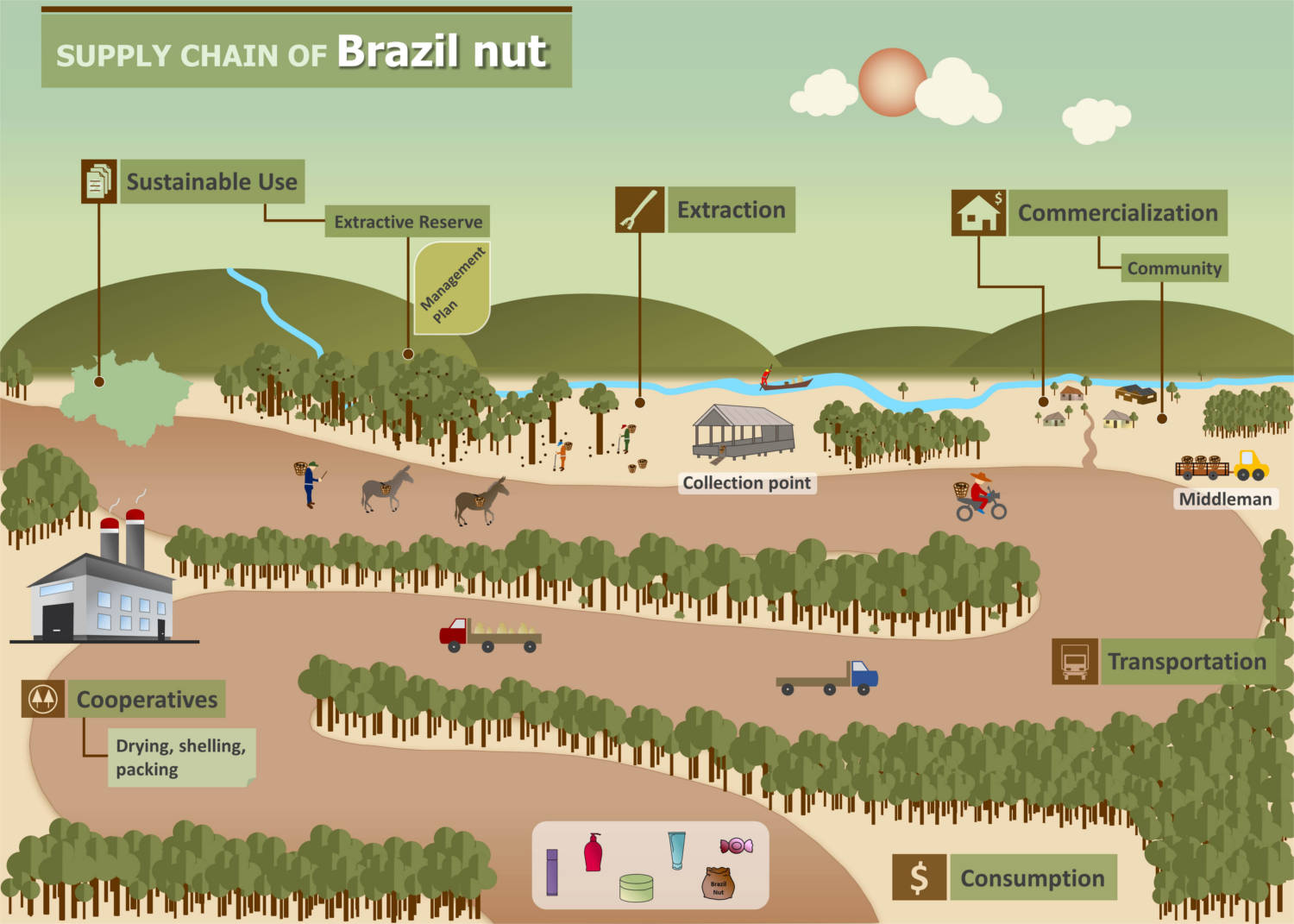Brazil nut (Bertholletia excelsa) is one of the main seeds commercially harvested, playing thus an important role in the extractive economy of the Amazon. Collection occurs once per year, in the rainy period (from December to March) and mostly in extractive settlements and reserves. The Brazil nut market chain involves many stakeholders from collection to the marketing of final product. We estimate that the potential annual production of Brazil nut in the Brazilian Amazon could be as high as 3.7 million tons. Nevertheless, only few regions are profitable due to poor infrastructure and a lack of available labor. Yields for Brazil nut average 8.19±7.41 kg/ha/year and rents average US$ 5.05±7.49 ha/year. In some highly productive areas of Brazil nut with yields ≈ 30 kg/ha/year, rents may reach up to US$ 46 ha/year.

Methodology
[…]
The Amazon forest provides immeasurable services to the livelihoods of communities that depend on them. Hence it is interlinked to the history and culture of forest communities. One of the goals of the extrativism is to make people aware of the values of flora and fauna of the Amazon forest. Extractivism struggles for preserving environmental traditions in hopes that one day forest will gain its deserved value.
